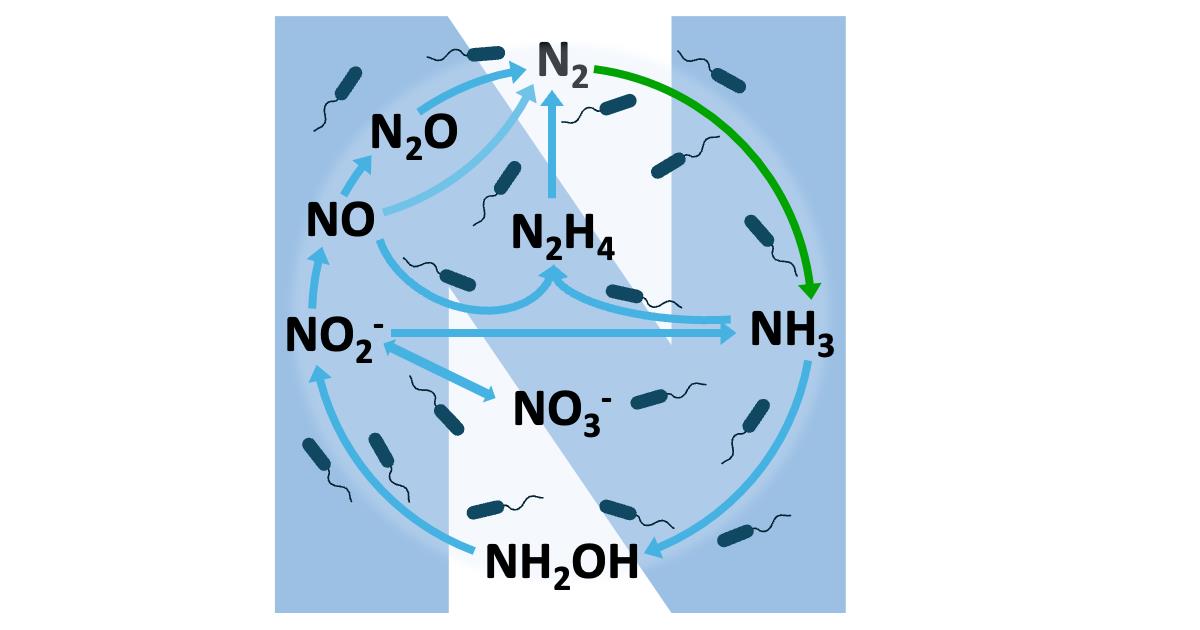Microbial Nitrogen Cycle
A special issue of Microorganisms (ISSN 2076-2607). This special issue belongs to the section "Environmental Microbiology".
Deadline for manuscript submissions: 30 April 2025 | Viewed by 3693

Special Issue Editor
Interests: diazotroph; nitrogen fixation; soil; biofilm
Special Issues, Collections and Topics in MDPI journals
Special Issue Information
Dear Colleagues,
The microbial nitrogen cycle is a crucial environmental process that involves the transformation and cycling of nitrogen by microorganisms. Nitrogen is essential for all living organisms, and its availability as either ammonium, nitrate or as part of amino acids greatly affects the growth and development of plants and animals. Diverse microbes catalyze the transformation of nitrogenous compounds through reduction, oxidation or hydrolysis, shifting the amount of nitrogen available to support life. All nitrogen conversions contribute to the nitrogen cycle and include nitrogen fixation, nitrification, denitrification, ammonification and other processes. While nitrogen in the form of ammonia or nitrate is needed in soil to support plant growth, excess nitrogen in water can lead to eutrophication and harm aquatic life. Understanding the microbial nitrogen cycle is important for various fields, including agriculture, ecology, and environmental science. This Special Issue aims to delve into the diverse aspects of the microbial nitrogen cycle. Through research articles, reviews, and case studies, this Special Issue aims to provide a comprehensive understanding of the role of microorganisms in cycling nitrogen in various environments. By delving into this topic, we hope to shed light on the crucial role of microbial communities in sustaining and regulating nitrogen availability in ecosystems.
Prof. Dr. Volker Brozel
Guest Editor
Manuscript Submission Information
Manuscripts should be submitted online at www.mdpi.com by registering and logging in to this website. Once you are registered, click here to go to the submission form. Manuscripts can be submitted until the deadline. All submissions that pass pre-check are peer-reviewed. Accepted papers will be published continuously in the journal (as soon as accepted) and will be listed together on the special issue website. Research articles, review articles as well as short communications are invited. For planned papers, a title and short abstract (about 100 words) can be sent to the Editorial Office for announcement on this website.
Submitted manuscripts should not have been published previously, nor be under consideration for publication elsewhere (except conference proceedings papers). All manuscripts are thoroughly refereed through a single-blind peer-review process. A guide for authors and other relevant information for submission of manuscripts is available on the Instructions for Authors page. Microorganisms is an international peer-reviewed open access monthly journal published by MDPI.
Please visit the Instructions for Authors page before submitting a manuscript. The Article Processing Charge (APC) for publication in this open access journal is 2700 CHF (Swiss Francs). Submitted papers should be well formatted and use good English. Authors may use MDPI's English editing service prior to publication or during author revisions.
Keywords
- microbial nitrogen cycle
- nitrogen fixation
- nitrification
- denitrification
- ammonification
Benefits of Publishing in a Special Issue
- Ease of navigation: Grouping papers by topic helps scholars navigate broad scope journals more efficiently.
- Greater discoverability: Special Issues support the reach and impact of scientific research. Articles in Special Issues are more discoverable and cited more frequently.
- Expansion of research network: Special Issues facilitate connections among authors, fostering scientific collaborations.
- External promotion: Articles in Special Issues are often promoted through the journal's social media, increasing their visibility.
- e-Book format: Special Issues with more than 10 articles can be published as dedicated e-books, ensuring wide and rapid dissemination.
Further information on MDPI's Special Issue polices can be found here.






